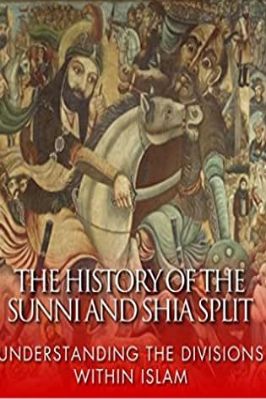
| Book Title | The Origins Of The Sunni Shia Split In Islam |
| Book Author | |
| Total Pages | 06 |
| Book Views | |
| Language | English |
| Book Download | PDF Direct Download Link |
| Get Hardcover | Click for Hard Similar Copy from Amazon |
The Origins of the Sunni Shia Split in Islam
THE ORIGINS OF THE SUNNI SHIA SPLIT IN ISLAM
The Shia shahadah (declaration of faith) states: “There is no god but Allah, Muhammad is the Messenger of Allah, Ali is the Friend of Allah. The Successor of the Messenger of Allah And his first Caliph.”
If you are already familiar with standard Sunni beliefs, you will immediately notice the addition to the shahadah regarding Imam Ali (ra), cousin of the Prophet (PBUH), husband of his daughter Fatima, father of Hassan and Hussein, and the second person ever to embrace Islam.
The term Shia or Shi’ite derives from a shortening of Shiat Ali or partisans of Ali. History Ali is the central figure at the origin of the Shia / Sunni split which occurred in the decades immediately following the death of the Prophet in 632.
Sunnis regard Ali as the fourth and last of the “rightly guided caliphs” (successors to Mohammed (PBUH) as leader of the Muslims) following on from Abu Bakr 632-634, Umar 634-644, and Uthman 644-656.
Shias feel that Ali should have been the first caliph and that the caliphate should pass down only to direct descendants of Mohammed (PBUH) via Ali and Fatima,
They often refer to themselves as ahl al Bayt or “people of the house” [of the prophet]. When Uthman was murdered while at prayer, Ali finally succeeded in the caliphate.
Ali was, however, opposed by Aisha, wife of the Prophet (PBUH) and daughter of Abu Bakr, who accused him of being lax in bringing Uthman’s killers to justice.
After Ali’s army defeated Aisha’s forces at the Battle of the Camel in 656, she apologized to Ali and was allowed to return to her home in Madinah where she withdrew from public life.
However, Ali was not able to overcome the forces of Mu’awiya Ummayad, Uthman’s cousin and governor of Damascus, who also refused to recognize him until Uthman’s killers had been apprehended.
At the Battle of Suffin Mu’awiya’s soldiers stuck verses of the Quran onto the ends of their spears with the result that Ali’s pious supporters refused to fight them.
Ali was forced to seek a compromise with Mu’awiya, but this so shocked some of his die-hard supporters who regarded it as a betrayal that he was struck down by one of his men in 661. Mu’awiya declared himself caliph.
Ali’s elder son Hassan accepted a pension in return for not pursuing his claim to the caliphate.
He died within a year, allegedly poisoned. Ali’s younger son Hussein agreed to put his claim to the caliphate on hold until Mu’awiya’s death. However, when Mu’awiya finally died in 680, his son Yazid usurped the caliphate.
Hussein led an army against Yazid but, hopelessly outnumbered, he and his men were slaughtered at the Battle of Karbala (in modern-day Iraq).
Hussein’s infant son, Ali, survived so the line continued. Yazid formed the hereditary Ummayad dynasty. The division between the Shia and what came to be known as the Sunni was set.
To read more about the The Origins Of The Sunni Shia Split In Islam book Click the download button below to get it for free
Report broken link
Support this Website
 Don't Miss out any Book Click Join OpenMaktaba Telegram group
Don't Miss out any Book Click Join OpenMaktaba Telegram group